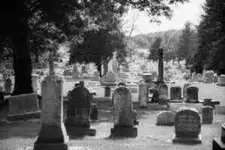Gypsy Heart
Gold Member
- #1
Thread Owner
http://www.rootsweb.com/~mostodda/words/words.htm
http://tattoo.about.com/gi/dynamic/...ttp://ah.bfn.org/a/forestL/symbols/index.html
http://genealogy.about.com/gi/dynam...tp://www.angelfire.com/ky2/cemetery/reid.html
When looking at the tombstones of your ancestors, look at the markings on the stone. These symbols can reveal many things about your loved ones.
A good practice would be to take a picture of the stone, for closer examination later. Look for the engravers markings too, look down near the base of the stone.
Don't jump to conclusions when trying to decipher the markings.
Read literature about the work of the individual carvers and about life during the period it was carved.
Keep in mind, any symbol can have more than one accurate interpretation, for example... an anchor is traditionally a sign of hope, but if the deceased was a sailor, it would likely represent his profession, so keep an open mind when doing your research.
http://tattoo.about.com/gi/dynamic/...ttp://ah.bfn.org/a/forestL/symbols/index.html
http://genealogy.about.com/gi/dynam...tp://www.angelfire.com/ky2/cemetery/reid.html
When looking at the tombstones of your ancestors, look at the markings on the stone. These symbols can reveal many things about your loved ones.
A good practice would be to take a picture of the stone, for closer examination later. Look for the engravers markings too, look down near the base of the stone.
Don't jump to conclusions when trying to decipher the markings.
Read literature about the work of the individual carvers and about life during the period it was carved.
Keep in mind, any symbol can have more than one accurate interpretation, for example... an anchor is traditionally a sign of hope, but if the deceased was a sailor, it would likely represent his profession, so keep an open mind when doing your research.





